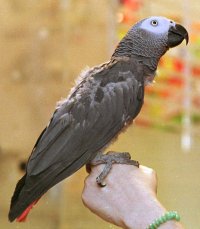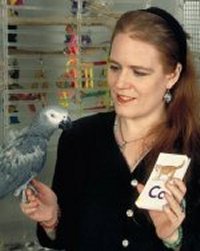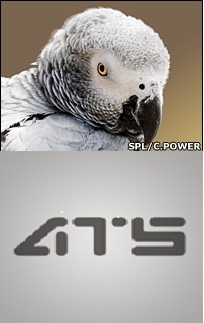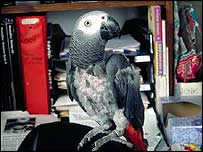It looks like you're using an Ad Blocker.
Please white-list or disable AboveTopSecret.com in your ad-blocking tool.
Thank you.
Some features of ATS will be disabled while you continue to use an ad-blocker.
share:
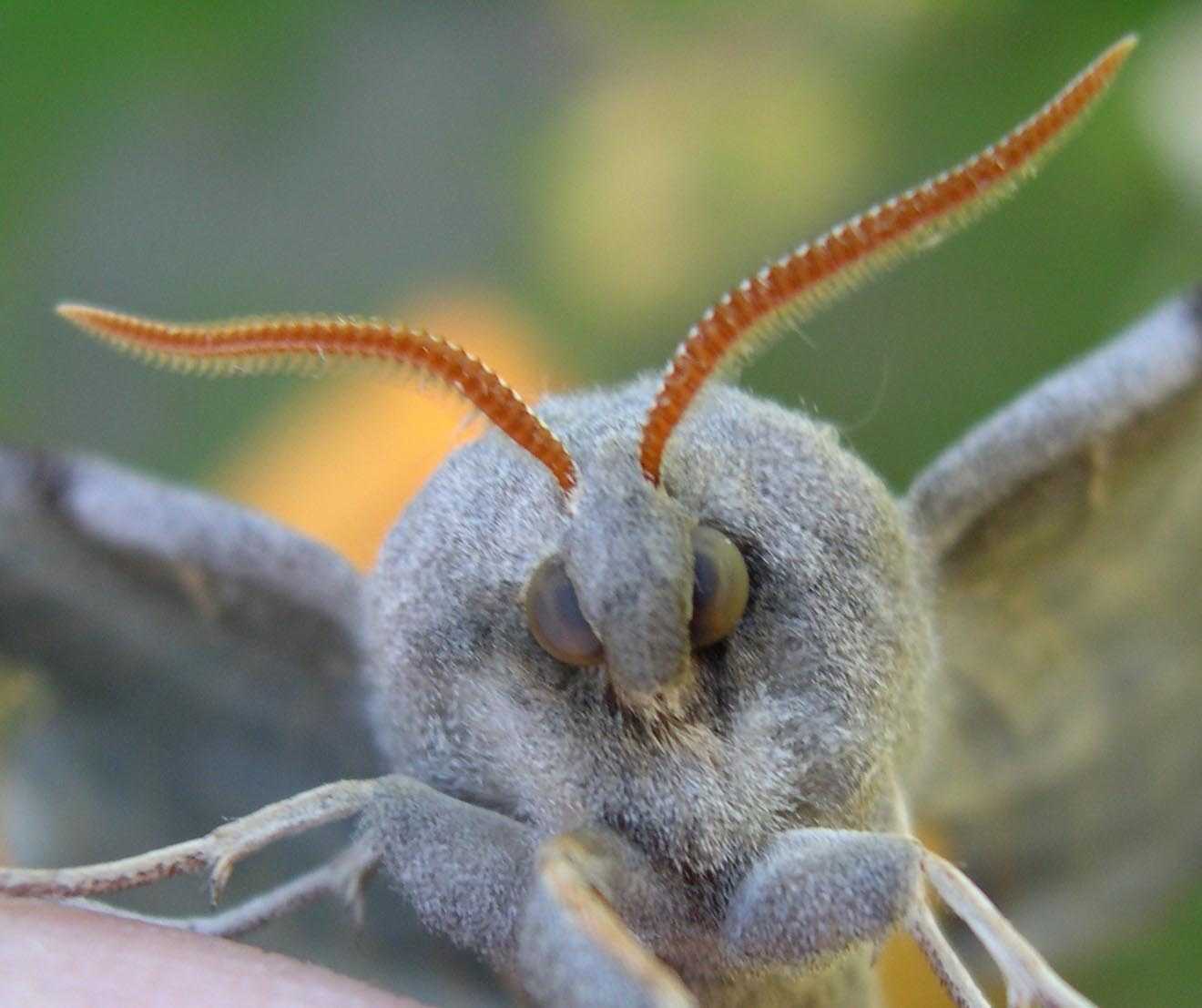
My moth story
Sometimes a moth might fly into my apartment and start flitting around the light fixture over my dinning room table/desk.
My first thought is "oh no, another one, damn!" that I'll never be able to catch it and will end up chasing all around but unable to catch it, and when I'd get close, off it would go into another room like the bathroom or the bedroom and to another light. Argh! Bad moth!
So, 3 moths ago.. (not months but rare, more like many moons), for some strange reason I out of the blue tried a totally different tact, and that was to, without making the moth "bad" for invading my apartment, I jist put my open hand up near the light and in a friendly way I just sort of WILLED Mr. moth to come freely into my hand, and voila, it worked, but instantly, without any hassle! I was amazed! The moth seemed to do just what I'd commanded or requested it to do in my mind's eye, like a non-verbal Jedi moth-mind trick - "come on little one, come straight into my hand right now without putting up a fuss, it's ok, I won't hurt you, just put you outside", and straight away the little moth complied as if in obedience to my friendly telepathic invite. Like it KNEW!
Could have been coincidence...
That was 3 moths ago..
2 moths ago - cont'd:
So the next time this happened, I had a couple of friends of mine over, Ang and Gus. In flew a mid-sized moth, flitting around the light making that annoying, urgent, flurry of tiny little "whisky" wing sounds, occasionally pinging and dinging the glass as it circled the globe, above and around which turns a fan, to keep the air moving (I smoke), so occasionally it might get bumped by the fan while it continued in its persistent lightbulb COD. How potentially annoying!
So I turned to Angela and I say, calmly, "No worries, watch this! and then, with the utmost friendly and playful and well-meaning intention towards the moth (that's the key part of it I think, where I had the sense that the moth could see me and was well aware of my disposition or countenance or body language and thus my intent), I stood up from the table and confidently raised my hand up by the light (while using "the Force" and giving the moth the Jedi mind trick, once again, "come on, it's ok, into the hand you go"), and without having to chase it around in the least, once AGAIN it flew straight into my hand with which I quickly but carefully entrapped the moth, but delicately, so as not to harm it or remove the special powder on it's wings that I don't know, makes it a moth?, helps it to fly? or whatever special purpose that moth-wing powder serves - and I walked quickly and triumphantly to the balcony, and set it free like a dove of peace and off it went into the night in search of another light.
Needless to say my guests were very impressed with my apparent moth-whispering ability, particularly Gus who's slightly mentally handicapped or "learning disabled" but we're never allowed to talk about that and needn't do so (he's highly functional and just enough that it must be ignored).
And I thought to myself - my God there must be something to this?!
Or was that just a coincidence..?, bearing in mind of course that I've been chasing moths, hard, whenever I might encounter one flying around a light in the house, all my life, so it represented a significant change of behavior on my part, and that of the moth's, both of us. (again, that's how you have to look at them and treat them, with respect and admiration, to make them do your bidding, they are not an "it" but a little being of some kind).
Current moth - September 8th, 2016 (tonight).
Just ten minutes ago, here I was, leafing through ATS (it's very addicting) at my dining room table/desk, and I got another one, a big fat one or one of reasonable size (I'd give it a name but that might be taking this human to moth business too far..), and my initial reaction was "Darn!" 'what do I do with you?" as I prepared to try to catch it, but then I paused and I remembered the way of the moth-whisperer.
Calming myself, and once again summoning "the force", with the utmost expectation of success I raised my arm like, as it wielding it as a thing of power (not unlike a light saber..) and reaching out, and into the moth's mind, I compelled it to go straight into my hand, and for the third time, the moth obeyed my will and sympathetic connection to it and the predicament that we found ourselves in, since I don't like to kill any creature unnecessarily (although for a mosquito I'll make an exception) - and complied in the most cooperative manner you might imagine as if to make the process as easy as possible and then once again, into the night it went, door closed, done. Moth problem solved!
You can do this too.
They know. They DO know! Even a moth. They may have powers of sense and observation that we simply cannot begin to fathom so I think that explains how a subtle shift in one's feeling towards it can create a connection and open up a communication channel, maybe even one that really IS telepathic. Hey don't scoff, there are telepathic parrots. Proven fact.
For some people maybe it's a special chipmonk "relationship", for others, various types of animals or insects or amphibians or equatic creatures. But I am the "mothman" (a force of good in this case, not to be confused with the horror/thriller).
Human-Animal relations.
I love the story of Captain Ahab's relationship with a particular white whale, although he wasn't using the light side of the force you could say (Ahab).
Have you had a strange insect or animal encounter or "relationship" that you'd like to share? (except you know, with sheep or whatever)
Do you think that we can commune with them, telepathically?
If you think I'm just kidding, I'll leave you with this video to ponder..
edit on 9-9-2016 by AnkhMorpork because: moth pic added for dramatic effect
a reply to: AnkhMorpork
I just watched the Video you posted, wow, that was incredibly powerful!
Good write up!
just want to say I've experimented with this before, talking to my black cat. They do understand, and it is real.
s/f
I just watched the Video you posted, wow, that was incredibly powerful!
Good write up!
just want to say I've experimented with this before, talking to my black cat. They do understand, and it is real.
s/f
edit on 9/9/2016 by awareness10 because: (no reason given)
a reply to: awareness10
Thanks. Glad you liked the video, and the write up (I try).
Do you think there are certain approaches and methods that work best?
The lady referred to a certain respect, to which I'd add a gentle, and almost playful mirth and/or loving kindness. I think that's the medium, which is of a purely emotional nature.
What was interesting with the woman and the cat, was that she was able to translate these shared emotional impressions back into English! so that she was speaking authentically on behalf of the cat, which was very interesting to say the least!
Me, with my moth, I have no idea what It might have been "saying".. something about the light, and maybe not wanting to have to go.. lol!
Thanks. Glad you liked the video, and the write up (I try).
Do you think there are certain approaches and methods that work best?
The lady referred to a certain respect, to which I'd add a gentle, and almost playful mirth and/or loving kindness. I think that's the medium, which is of a purely emotional nature.
What was interesting with the woman and the cat, was that she was able to translate these shared emotional impressions back into English! so that she was speaking authentically on behalf of the cat, which was very interesting to say the least!
Me, with my moth, I have no idea what It might have been "saying".. something about the light, and maybe not wanting to have to go.. lol!
WOW! That was an incredible video, and you're a very talented writer - and MothMan.
I hope everyone gets a chance to see that!
I hope everyone gets a chance to see that!
Introducing N'kisi the Pyschic Parrot..
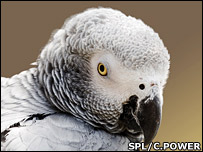

THE N'KISI PROJECT
Testing a Language - Using Parrot for Telepathy
paper by Rupert Sheldrake and Aimee Morgana from the Journal of Scientific Exploration
The N'kisi Project is a series of controlled experiments and ongoing research in interspecies communication and telepathy conducted by Aimee Morgana and her language-using parrot "N'kisi".
Abstract
Aimée Morgana noticed that her language-using African Grey parrot, N'kisi, often seemed to respond to her thoughts and intentions in a telepathic manner. We set up a series of trials to test whether this apparent telepathic ability would be expressed in formal tests in which Aimée and the parrot were in different rooms, on different floors, under conditions in which the parrot could receive no sensory information from Aimée or from anyone else.
During these trials Aimée and the parrot were both videotaped continuously. At the beginning of each trial, Aimée opened a numbered sealed envelope containing a photograph, and then looked at it for two minutes. These photographs corresponded to a prespecified list of key words in N'kisi's vocabulary, and were selected and randomized in advance by a third party. We conducted a total of 149 two-minute trials. The recordings of N'kisi during these trials were transcribed blind by three independent transcribers. Their transcripts were generally in good agreement. Using a majority scoring method, in which at least two of the three transcribers were in agreement, N'kisi said one or more of the key words in 71 trials. He scored 23 hits: the key words he said corresponded to the target pictures.
In a Randomized Permutation Analysis (RPA), there were as many or more hits than N'kisi actually scored in only 5 out of 20,000 random permutations, giving a p value of 5/20,000 or 0.00025. In a Bootstrap Resampling Analysis (BRA), only 4 out of 20,000 permutations equalled or exceeded N'kisi's actual score (p = 0.0002). Both by the RPA and BRA the mean number of hits expected by chance was 12, with a standard deviation of 3. N'kisi repeated key words more when they were hits than when they were misses. These findings are consistent with the hypothesis that N'kisi was reacting telepathically to Aimée's mental activity.
Full Text: www.sheldrake.org...
About N'kisi:
N'kisi is a captive bred, hand raised Congo African Gray Parrot. He is 4-1/2 years old, and his species has a life span similar to humans. He has received teaching in the use of language for 4 years. He is now one of the world's top "language-using" animals, with an apparent understanding and appropriate usage of over 700 words. Aimee intuitively taught N'kisi as one would a child, by explaining things to him in context. (This goes beyond typical interactions with a "pet", involving many hours per day of teaching and conversations.) He is treated as a member of the family.
N'kisi was not trained like a performing animal, and does not just mimic or use speech "on cue". Instead, he has been allowed to develop his own creative relationship to language as a means of self-expression. N'kisi speaks in sentences, showing a grasp of grammar in formulating his own original expressions. He is capable of actual conversations. He often initiates comments about what we are doing, feeling, looking at, thinking, etc, which is how we discovered his ability to read minds.
N'kisi often demonstrates telepathy in spontaneous situations, and also communicates love, compassion, and a keen sense of humor.
Language-using animals are like "animal ambassadors" helping to bridge the worlds of other species with our own. In the wild, parrots live in large flocks with complex social interactions, which have yet to be studied.
About Aimee Morgana:
Since childhood, Aimee has had an intuitive connection with animals, and used these insights in developing her own techniques for teaching parrots to use language. Aimee has been working with parrots since 1985. Her goal is to establish a true communicative dialogue with a member of another species. Unlike laboratory researchers, Aimee decided to give N'kisi "dominance" in their relationship, relinquishing control to open the door for his creativity. She wanted to find out what a parrot might actually have to say, which would reveal fascinating information about how these animals think.
Aimee's ongoing work with N'Kisi illustrates her concept of "partnership research," an approach which honors and explores the close relationships people can have with animals as friends and teachers. Aimee is part of an emerging group of conceptually based artists interested in exploring our human relationship with Nature in work dealing with animals, biology, environmental concerns, and quantum aspects of consciousness. In a dynamic cross-fertilization of approaches, some of these artists have begun collaborating with scientists in new-paradigm research projects that bridge the disciplines of Art and Science.
edit on 9-9-2016 by AnkhMorpork because: (no reason given)
This just gave me goosebumps. The first time I've ever heard someone else say this. The earlier half of this year I noticed that I can walk up to a
lot of flys and they won't fly away, but will walk on my hands without fear.
I'll explain a little more when I get a chance because I'm at work atm.
I'll explain a little more when I get a chance because I'm at work atm.
a reply to: Abinkadoo
Very interesting! Looking forward to hearing more..
Did you find that anything shifted within you and in your "approach"? In other words, did you switch from thinking of the fly as an "it" to some sort of being.
I once had a raven do something very unusual with me.
Look forward to hearing your story, but I'll end off the night with that one, which is also interesting in so far as the raven seemed to display a number of almost human qualities, like showing off and being humorous, charming, and playful.
That language-speaking psychic parrot was pretty interesting eh?
As to your flies, maybe a little fly-circus isn't so fanciful an idea after all.. lol!
Very interesting! Looking forward to hearing more..
Did you find that anything shifted within you and in your "approach"? In other words, did you switch from thinking of the fly as an "it" to some sort of being.
I once had a raven do something very unusual with me.
Look forward to hearing your story, but I'll end off the night with that one, which is also interesting in so far as the raven seemed to display a number of almost human qualities, like showing off and being humorous, charming, and playful.
That language-speaking psychic parrot was pretty interesting eh?
As to your flies, maybe a little fly-circus isn't so fanciful an idea after all.. lol!
edit on 9-9-2016 by AnkhMorpork because: (no reason given)
Wonderful thread! I had completely forgotten about the amazing video you posted with the wildcats. It was so inspiring to see that again. I have
always had an intuitive connection to my domesticated cats and strays sometimes too.
Funny that you should mention moths tonight as I had one flying around earlier in the house. I didn't try to catch it. I love moths and he is welcomed to stay.
Funny that you should mention moths tonight as I had one flying around earlier in the house. I didn't try to catch it. I love moths and he is welcomed to stay.
a reply to: AnkhMorpork
Yes totally. Telepathy is interesting to say the least. I believe one shouldn't have any fear, animals can sense it and it scares them, wild animals react to fear from humans because it confuses them. Also, for me anyways, it's always spontaneous. If you think about it too much, and become too analytical, it ruins the vibe. Just let it flow and listen, listening is the key, and it's always spontaneous.
People with dark energy can't do this, with a good result anyway.
Now the moth thing you tried, way cool.
You didn't think too much before you tried this did you? You just let it go and it happened instantaneously. That's the beauty of it really. You believed no doubts at all. everything is possible, and when you're feeling positive good vibes will come out and effect everything around you..
It's all good!
Yes totally. Telepathy is interesting to say the least. I believe one shouldn't have any fear, animals can sense it and it scares them, wild animals react to fear from humans because it confuses them. Also, for me anyways, it's always spontaneous. If you think about it too much, and become too analytical, it ruins the vibe. Just let it flow and listen, listening is the key, and it's always spontaneous.
People with dark energy can't do this, with a good result anyway.
Now the moth thing you tried, way cool.
You said - put my open hand up near the light and in a friendly way I just sort of WILLED Mr. moth to come freely into my hand, and voila, it worked, but instantly, without any hassle!
You didn't think too much before you tried this did you? You just let it go and it happened instantaneously. That's the beauty of it really. You believed no doubts at all. everything is possible, and when you're feeling positive good vibes will come out and effect everything around you..
It's all good!
a reply to: AnkhMorpork
havent watched your video yet, but I truly concur with your observations. I have experimted about 3 times,withour
2 dogs; it works everytime. Its just amatter of stopping to think and do it.
Sadly we are creatures of habit and to learn new skills we have to reprogramme our own conditioning to overcome
what rubbish we have been fed into our minds
thanks
s & f
havent watched your video yet, but I truly concur with your observations. I have experimted about 3 times,withour
2 dogs; it works everytime. Its just amatter of stopping to think and do it.
Sadly we are creatures of habit and to learn new skills we have to reprogramme our own conditioning to overcome
what rubbish we have been fed into our minds
thanks
s & f
More about N'ksisi the language communicating psychic parrot
Listen to N'kisi talking while playing with a children's puzzle toy.
www.sheldrake.org...
Parrot's oratory stuns scientists
By Alex Kirby
BBC News Online environment correspondent
Feathered prodigy: N'kisi leads the field
The finding of a parrot with an almost unparalleled power to communicate with people has brought scientists up short.
The bird, a captive African grey called N'kisi, has a vocabulary of 950 words, and shows signs of a sense of humour.
He invents his own words and phrases if he is confronted with novel ideas with which his existing repertoire cannot cope - just as a human child would do.
N'kisi's remarkable abilities, which are said to include telepathy, feature in the latest BBC Wildlife Magazine.
N'kisi is believed to be one of the most advanced users of human language in the animal world.
About 100 words are needed for half of all reading in English, so if N'kisi could read he would be able to cope with a wide range of material.
Polished wordsmith
He uses words in context, with past, present and future tenses, and is often inventive.
One N'kisi-ism was "flied" for "flew", and another "pretty smell medicine" to describe the aromatherapy oils used by his owner, an artist based in New York.
When he first met Dr Jane Goodall, the renowned chimpanzee expert, after seeing her in a picture with apes, N'kisi said: "Got a chimp?"
School's in: He is a willing learner
He appears to fancy himself as a humourist.
When another parrot hung upside down from its perch, he commented: "You got to put this bird on the camera."
Dr Goodall says N'kisi's verbal fireworks are an "outstanding example of interspecies communication".
In an experiment, the bird and his owner were put in separate rooms and filmed as the artist opened random envelopes containing picture cards.
Analysis showed the parrot had used appropriate keywords three times more often than would be likely by chance.
Captives' frustrations
This was despite the researchers discounting responses like "What ya doing on the phone?" when N'kisi saw a card of a man with a telephone, and "Can I give you a hug?" with one of a couple embracing.
Professor Donald Broom, of the University of Cambridge's School of Veterinary Medicine, said: "The more we look at the cognitive abilities of animals, the more advanced they appear, and the biggest leap of all has been with parrots."
Alison Hales, of the World Parrot Trust, told BBC News Online: "N'kisi's amazing vocabulary and sense of humour should make everyone who has a pet parrot consider whether they are meeting its needs.
"They may not be able to ask directly, but parrots are long-lived, and a bit of research now could mean an improved quality of life for years."
web.archive.org...://news.bbc.co.uk/1/hi/sci/tech/3430481.stm
Listen to N'kisi talking while playing with a children's puzzle toy.
www.sheldrake.org...
edit on 9-9-2016 by AnkhMorpork because: (no reason given)
a reply to: AnkhMorpork
The Chinese believe moths are your dead ancestors, which is why you are in deep #### if you kill one while in the company of those who've passed down this tradition/knowledge/superstition (however you look at it).
For me I think my puppy might be the reincarnation of someone or something I've known before. It treats me miles different than my wife, and licks my feet and face non-stop (at different times, not foot2face)
The Chinese believe moths are your dead ancestors, which is why you are in deep #### if you kill one while in the company of those who've passed down this tradition/knowledge/superstition (however you look at it).
For me I think my puppy might be the reincarnation of someone or something I've known before. It treats me miles different than my wife, and licks my feet and face non-stop (at different times, not foot2face)
edit on 9-9-2016 by boncho because: (no reason given)
a reply to: AnkhMorpork
Thank you for posting the video of Spirit.
That was an emotional revelation indeed !
I guess you will be Hippo whispering in no time !
Thank you for posting the video of Spirit.
That was an emotional revelation indeed !
I guess you will be Hippo whispering in no time !
a reply to: AnkhMorpork
I've come to the conclusion that it's a form of empathy and that we're simply feeling the intent and emotions of other living beings. I even think the true form of "becoming one with Nature" starts with respecting other creatures as equal beings with equal wants & needs. I think people forget that we're many times bigger, heavier, stronger, and deadlier than most of these animals. So I always try to remind people that they're probably much more afraid of us than we are of them.
For me, it started when I had my religious awakening. It felt as if God implanted the words "All life is precious" in my heart & mind, so I decided to stop killing things unless I absolutely needed to. Not only did I become vegetarian after that, but I also started catching/releasing animals when they'd get in a family member's house. I've helped with mice, birds, and a plethora of insects from wasps & spiders to praying mantis and some things I still can't identify. I won't even kill snakes when they're in the yards; I just make my presence felt until they leave.
The thing that sticks out to me the most is their fear. Most of the time I can feel an overwhelming fear from them as they try to escape or feel cornered. So I first try to calm them and show them I'm no threat. Then I either try to guide them out by giving them an escape route, or I'll try to catch them and release them. The only one that really backfired was when my sister had a bird in her house. Once it stopped seeing me as a threat, it started ignoring me. lol It took an extra 15min or so to get it to fly out.
I've come to the conclusion that it's a form of empathy and that we're simply feeling the intent and emotions of other living beings. I even think the true form of "becoming one with Nature" starts with respecting other creatures as equal beings with equal wants & needs. I think people forget that we're many times bigger, heavier, stronger, and deadlier than most of these animals. So I always try to remind people that they're probably much more afraid of us than we are of them.
For me, it started when I had my religious awakening. It felt as if God implanted the words "All life is precious" in my heart & mind, so I decided to stop killing things unless I absolutely needed to. Not only did I become vegetarian after that, but I also started catching/releasing animals when they'd get in a family member's house. I've helped with mice, birds, and a plethora of insects from wasps & spiders to praying mantis and some things I still can't identify. I won't even kill snakes when they're in the yards; I just make my presence felt until they leave.
The thing that sticks out to me the most is their fear. Most of the time I can feel an overwhelming fear from them as they try to escape or feel cornered. So I first try to calm them and show them I'm no threat. Then I either try to guide them out by giving them an escape route, or I'll try to catch them and release them. The only one that really backfired was when my sister had a bird in her house. Once it stopped seeing me as a threat, it started ignoring me. lol It took an extra 15min or so to get it to fly out.
a reply to: AnkhMorpork
Great thread and many great replies. What we are starting to glimpse in our larger view goes beyond mental thought transference but to gain a vague understanding of this thing called "consciousness" that heretofore we have kept confined to a narrow understanding of what it is about. Going from being virtually "nothing" according to hard science, it may well turn out to be the "everything" of the Universe.
That is a cryptic statement, of course, but who knows what really runs our very selves and the entire cosmos?
Great thread and many great replies. What we are starting to glimpse in our larger view goes beyond mental thought transference but to gain a vague understanding of this thing called "consciousness" that heretofore we have kept confined to a narrow understanding of what it is about. Going from being virtually "nothing" according to hard science, it may well turn out to be the "everything" of the Universe.
That is a cryptic statement, of course, but who knows what really runs our very selves and the entire cosmos?
a reply to: AnkhMorpork
Corelation does not imply causation. They could be the only moths that will ever land on your hand for the rest of your life. That takes you to sample size determination.
Was your sample big enough to accept your hypothesis that you are a telepathic moth whisperer? Another experiment could use a double blind and video evidence or research partners.
I loved your writing. Sweet thread
Corelation does not imply causation. They could be the only moths that will ever land on your hand for the rest of your life. That takes you to sample size determination.
Was your sample big enough to accept your hypothesis that you are a telepathic moth whisperer? Another experiment could use a double blind and video evidence or research partners.
I loved your writing. Sweet thread
new topics
-
Biden pardons 39 and commutes 1500 sentences…
Mainstream News: 4 hours ago -
Jan 6th truth is starting to leak out.
US Political Madness: 6 hours ago -
Deep state control - How your tax dollars are used to censor and brainwash
Propaganda Mill: 7 hours ago -
DONALD J. TRUMP - TIME's Most Extraordinary Person of the Year 2024.
Mainstream News: 7 hours ago -
Top Sci Fi/Horror Crossover Movies
Movies: 9 hours ago -
Magic Vaporizing Ray Gun Claim - More Proof You Can't Believe Anything Hamas Says
War On Terrorism: 10 hours ago -
One out of every 20 Canadians Dies by Euthanasia
Medical Issues & Conspiracies: 11 hours ago -
USS Liberty - I had no idea. Candace Owen Interview
US Political Madness: 11 hours ago
top topics
-
USS Liberty - I had no idea. Candace Owen Interview
US Political Madness: 11 hours ago, 18 flags -
Jan 6th truth is starting to leak out.
US Political Madness: 6 hours ago, 17 flags -
DONALD J. TRUMP - TIME's Most Extraordinary Person of the Year 2024.
Mainstream News: 7 hours ago, 8 flags -
Magic Vaporizing Ray Gun Claim - More Proof You Can't Believe Anything Hamas Says
War On Terrorism: 10 hours ago, 7 flags -
Top Sci Fi/Horror Crossover Movies
Movies: 9 hours ago, 7 flags -
Biden pardons 39 and commutes 1500 sentences…
Mainstream News: 4 hours ago, 7 flags -
One out of every 20 Canadians Dies by Euthanasia
Medical Issues & Conspiracies: 11 hours ago, 6 flags -
Deep state control - How your tax dollars are used to censor and brainwash
Propaganda Mill: 7 hours ago, 4 flags
active topics
-
ILLUMINATION – Reverse Perception Of Cyclic Probability – CEO ASSASSINATION
Secret Societies • 25 • : KnowItAllKnowNothin -
Will all hell break out? Jersey drones - blue beam
Aliens and UFOs • 61 • : Kangawoo2 -
Biden pardons 39 and commutes 1500 sentences…
Mainstream News • 16 • : TTU777 -
DONALD J. TRUMP - TIME's Most Extraordinary Person of the Year 2024.
Mainstream News • 19 • : WeMustCare -
-@TH3WH17ERABB17- -Q- ---TIME TO SHOW THE WORLD--- -Part- --44--
Dissecting Disinformation • 3646 • : duncanagain -
Jan 6th truth is starting to leak out.
US Political Madness • 14 • : BeyondKnowledge3 -
Top Sci Fi/Horror Crossover Movies
Movies • 7 • : Bluntone22 -
Drones everywhere in New Jersey
Aliens and UFOs • 81 • : WeMustCare -
During Our Covid-19 National Emergency the CDC Says it's OK to Infect Others with Covid-19.
Diseases and Pandemics • 22 • : WeMustCare -
USS Liberty - I had no idea. Candace Owen Interview
US Political Madness • 26 • : grey580

